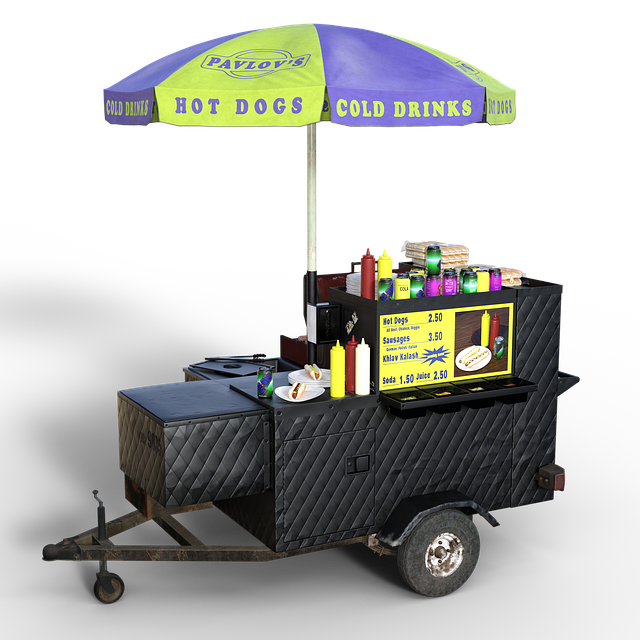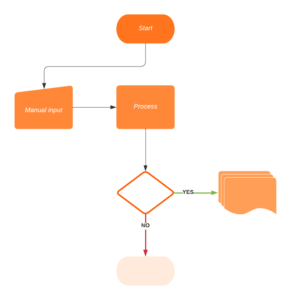What are your biggest business frustrations? If you’re looking to grow or improve your business, this may be the most important question you can ask. And the solutions, more often than not, can be found in your business processes.
What are business processes?
A business process is a series of steps that leads to the fulfillment of an organizational goal.
Generally speaking, there are three types of business processes:
- Core businesses processes support the successful delivery of your product or service to a happy customer. These are your revenue-generating activities.
- Supporting business processes provide the framework for the delivery of those products or services, such as accounting or human resources.
- Management business processes coordinate core and support processes, making sure all areas of the business work together.
If you don’t intentionally design your business processes, they will be created by default. Plus, different people will have slightly different processes, which will inevitably lead to drama (or lost institutional knowledge should one or more employees leave).
It’s worth being intentional about this because, the more efficient and effective your business processes, the more efficient and effective your business will be.
 Business Process Reengineering (Frankfurter Edition)
Business Process Reengineering (Frankfurter Edition)
Congratulations! You just bought a hot dog stand. And it’s in a prime spot, just outside the ball park.
The old hot dog vendor, Larry, has been slinging dogs for many years. He’s an amiable fellow. It can’t hurt to ask for his advice. “What do you suggest I do to make this business profitable?” you ask.
Larry thinks this is hilarious. “Give ’em what they ask for,” he says. “And, if you can, do it with a smile.” Then he rides off into the sunset, or wherever old hot dog vendors go when they retire.
Seems easy enough. [ominous music here]
Your First Game
That Saturday, you set up ahead of the afternoon game. The weather is gorgeous. Before long, fans start arriving, and they’re all looking for one of Larry’s famous hot dogs.
You fly into action, but it’s so busy you start messing up people’s orders. Having to remake them is really slowing you down. Not to mention having to switch between making the hot dogs and handling the cash.
Before long, there’s a line around the block, and that smile that’s plastered on your face isn’t quite as genuine as it was at the start. You might have snapped at a customer or two.
Then the impossible: you run out of mustard before the first pitch. Lots of people go away unhappy, and more than a few are muttering about how much they miss Larry.
As you pack it in, you think about Larry’s sage advice:
- Give ’em what they ask for
- Do it with a smile on your face
“Wasn’t so easy after all,” you think.
How Frustrations Can Help
So many frustrations! Here are a few:
- You kept messing up the orders.
- There was a huge line because you were too slow.
- You were stressed out the entire time.
- You didn’t have enough materials to get the job done.
Your list of frustrations will suggest business processes that need improvement. Here are a few from your day at the ballpark:
- How to receive the customer’s order, process it, and give them what they asked for
- How to handle customer payments in an orderly fashion
- How to make the hot dogs as efficiently as possible
- How to make sure you have enough of each ingredient for the whole afternoon
- How to interact with customers in a positive way.
One Business Process at a Time
That’s a lot to tackle! It’s important to consider each business process independently before considering how it relates to your other processes.
Here’s a roadmap for how to go about doing just that:
- State the goal. What result are you trying to achieve with this business process?
 Document the existing process. Make a list of all the steps in the current process or set it up as a flow chart[1] (or get it down on paper in any form that makes sense to you).
Document the existing process. Make a list of all the steps in the current process or set it up as a flow chart[1] (or get it down on paper in any form that makes sense to you).- Revise the process. Take a hard look at what you’re doing now and identify some alternatives. Here are some questions to ask:
- Do I need to refine my goal to make it more measurable or achievable? How do we define a win?
- What information or resources will I need to reach my goal?
- How can I make this process quantifiable and repeatable?
- Who will be responsible for the business process? Who will implement it?
- Why is this business process important to our larger goals? (This secures buy-in and cements the process in the minds of your employees.)
- Document the new process. Write it down step-by-step, or make a detailed flow chart[1].
- Test, test, test. No business process is set in stone. In fact, continuous improvement is your friend. Try it out and don’t be afraid keep working on it.
[1] Like the idea of a flow chart but not sure where to start? Check out the Lucid flow chart builder. They have a free version you can try to get your feet wet.
What business processes cause the most frustration in your business? Tell us in the comments.

